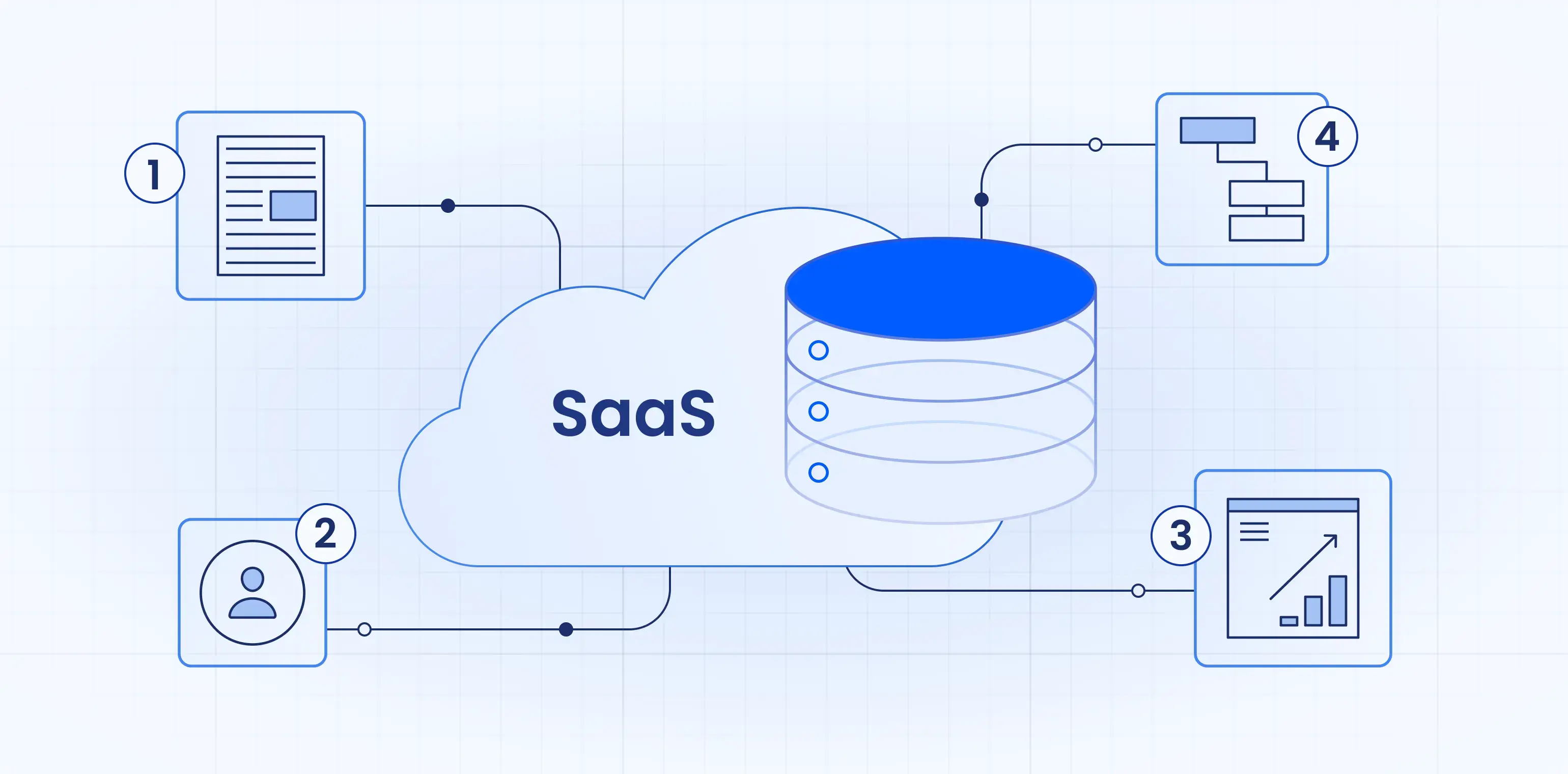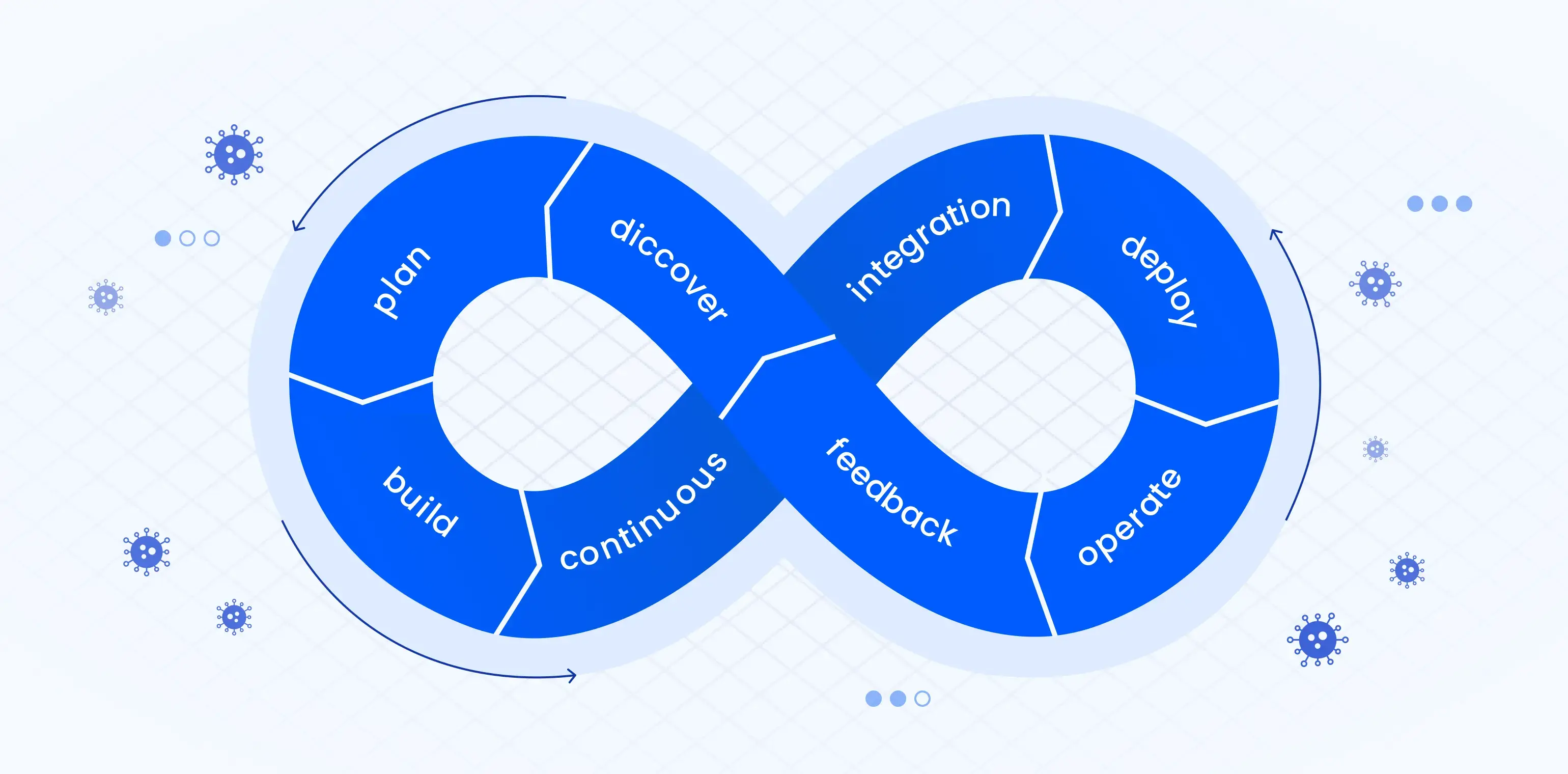How to Optimize a Software Project with Low-Code API Integration
APIs (Application Programming Interfaces) enable different software services to communicate with each other. Instead of developing new functionality from scratch, APIs allow you to connect pre-built functionality to your software product, saving time and resources. Additionally, you can share your functionality with other software products, thereby increasing your brand's exposure.
According a recent study, the primary drivers of API usage include platform integrations, development efficiencies, digital transformation, cloud migration, partnership, and data monetization.
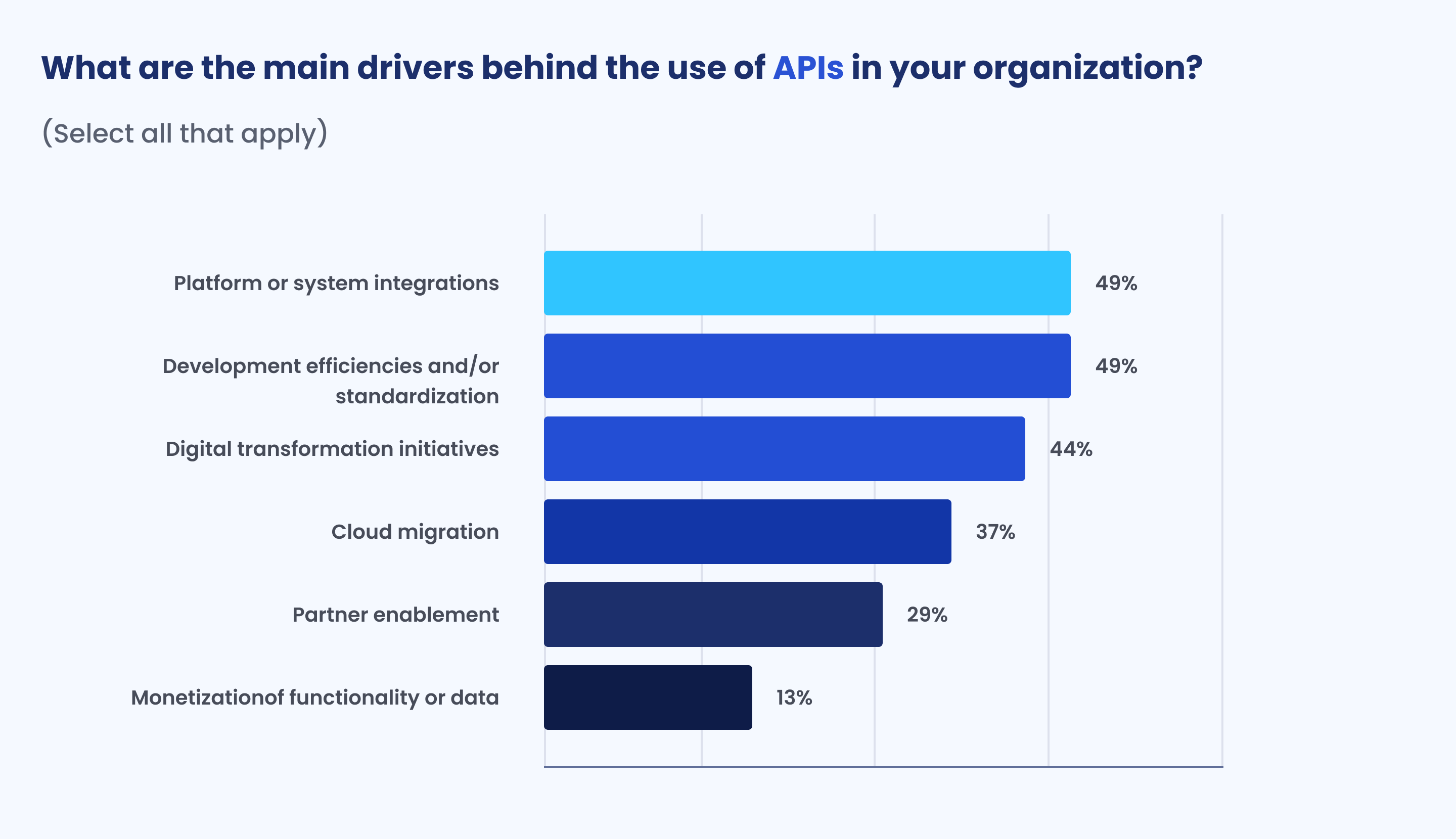
In today's digital world, API development is a fundamental part of any successful software project. You can simplify and expedite API implementation by using a low-code API integration platform.
Challenges of API integration
Successful API integration comes with several challenges. Here are the most common issues:
Data security and privacy. Challenges may arise in implementing proper authentication, authorization, and encryption mechanisms to protect sensitive information.
Standardization and compatibility. Differences in data formats, protocols, and standards across systems can pose challenges. Ensuring compatibility between APIs in legacy systems is especially complex.
Compliance and regulatory. Compliance with industry regulations and data protection laws (such as GDPR or HIPAA) poses additional challenges.
Maintenance. Complex APIs may need regular updates and modifications. Not handling issues in a timely manner may lead to system downtime and user inconvenience.
Developers expertise. You should have experienced developers in place to implement API using traditional coding techniques. The developers should also have a deep understanding of the domain and know what specific technologies to use in the given case.
How low code helps overcome API integration challenges
Low-code API development addresses the above challenges by simplifying the integration process.
Low-code platforms offer built-in authentication and authorization features. This streamlines the implementation of robust data protection measures.
The visual modeling capabilities of low-code platforms enhance standardization. This makes it easier to create APIs that are compatible across diverse systems.
For compliance, low-code solutions offer configurable security protocols to align with regulations like GDPR or HIPAA.
The fast development process also facilitates low-code API maintenance. This enables quick updates without extended downtime.
With low code, specialists with varying levels of technological expertise can contribute to API development. That is why you will be less dependent on highly specialized developers.
Need to enhance your project with third-party services?
Low-code API vs. high-code API
The key difference between high-code and low-code API lies in the approach to development. Low-code API development emphasizes simplicity and rapid application development through ready-made blocks. High code involves traditional manual coding, providing more granular control and customization options.
It's also worth noting that APIs are often developed using various tools and platforms. Thus, the distinction between low-code API development and high-code API development may not be as rigid as in general application building. With all that, low-code API builders speed the process of API implementation and reduce the time-to-market of a newly developed software product.
Below are specific characteristics of low-code API and high-code API approaches.
Low-code API
Simplified development. Low-code API development is simpler compared to high-code development. It involves using visual development tools and pre-built components to create APIs with minimal hand-coding.
Rapid development. Low code emphasizes speed, allowing users to create APIs and applications quickly without extensive manual coding. This is achieved through visual interfaces and the abstraction of complex coding tasks.
Accessibility. Low-code API platforms are user-friendly. They enable individuals with varying levels of technical expertise to participate in the development process. Unlike the high-code approach, where developers should be involved, low-code API development can be done by business analysts, project managers, or less experienced technical specialists.
Automation. Low-code platforms often automate repetitive and mundane coding tasks, abstracting much of the complexity associated with traditional coding.
High-code API
Traditional coding. High-code development is based on the traditional approach of manually writing code. It requires a higher degree of programming expertise from API developers.
Granular control. High-code development offers developers extensive control over the application's architecture, logic, and functionality. By writing code from scratch, developers can optimize it for specific requirements.
Full customization. High code allows for complete customization. It is suitable for complex projects where specific functionalities must be tailored to unique requirements.
Expertise. High code requires good knowledge of coding and programming languages. Developers using high-code approaches are expected to deeply understand programming concepts.
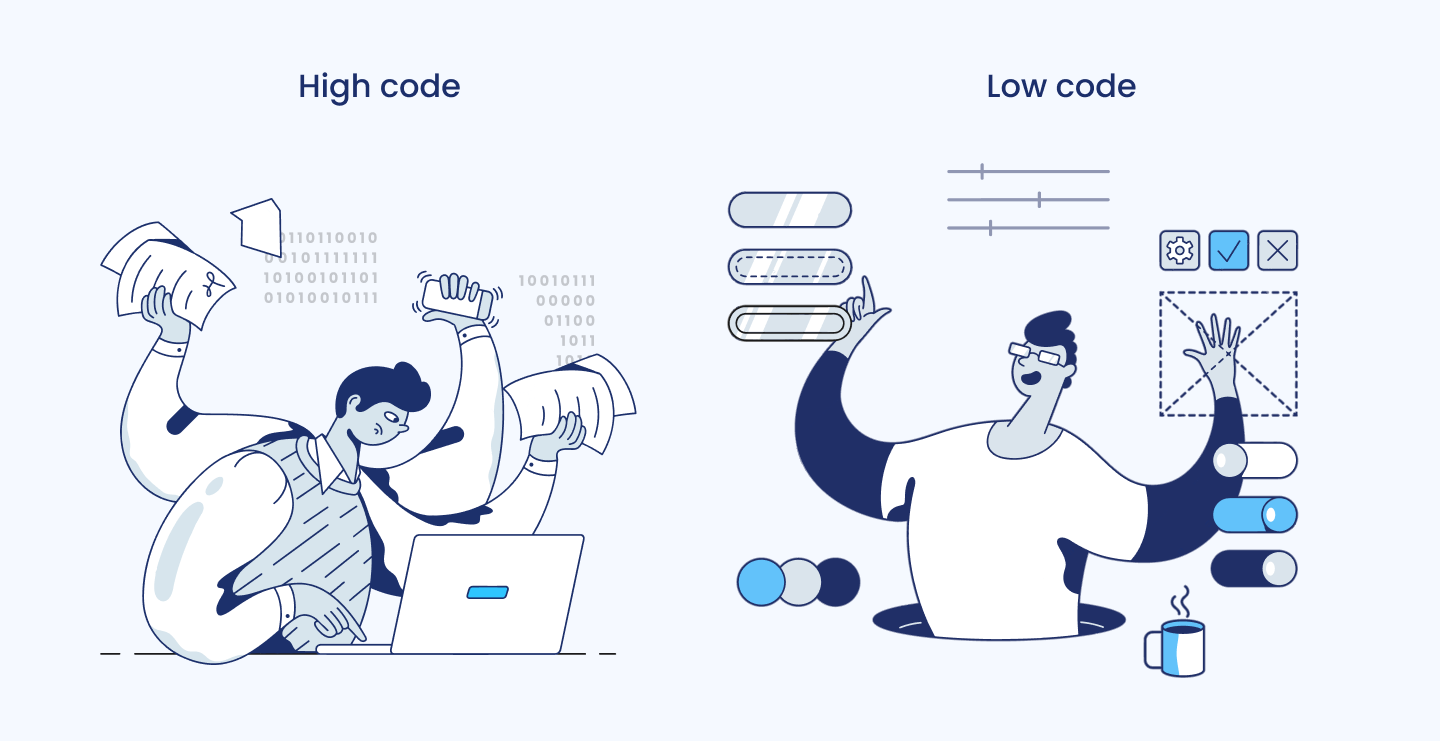
Low-code API in a high-code project
It is essential to remember that an API is not a standalone product but rather a set of protocols and tools that allow different software applications to communicate with each other. APIs are developed as part of a software system and serve as a bridge between different components within that system or between multiple systems.
With all that, the API development approach may not necessarily be identical to the one for software product development. Even if your project is based on high-code development, you can implement an API using a low-code API platform.
Here's how you can approach implementing an API using low code in a high-code software system:
Identify API functionalities. Determine the functionalities or data points within your high-code system that you want to expose via the API. This could be specific features, data access points, or business logic.
Choose a low-code API platform. Select a low-code platform that supports API development. Such platforms usually provide visual tools and pre-built components to make API development easy and fast.
Define API Endpoints. Use the low-code platform to define the API endpoints, specifying the methods (GET, POST, PUT, DELETE) and the expected data formats. Document the API functionalities and expected input/output.
Implement API logic. Leverage the development tools to implement the logic behind the low-code API. This may involve connecting to the existing high-code components, databases, or services within your system.
Implement security measures. Use configurable authentication mechanisms and encryption options for secure data transmission and role-based access controls. You can utilize OAuth, API keys, or custom authentication and transmit data via HTTPS protocol.
Test. Thoroughly test the low-code API to ensure that it works as expected. Conduct both unit testing and integration testing to verify its compatibility with the high-code components and the overall system.
Document the API. Provide instructions on how developers can interact with your low-code API. Define the expected inputs and outputs and authentication requirements. Make sure that documentation is clear and well-organized.
Not sure what API development approach to choose?
Best low-code API integration platforms
Creating an API with low code means using a specialized platform that offers pre-built blocks to develop required functionality. It should be noted that the majority of such platforms are not purely low code. While they provide the ability to build APIs without coding, they also enable developers to use their coding skills for better customization.
The following low-code API builders have proven their effectiveness in various software projects:
Zapier. An online tool that connects various apps, enabling users to automate workflows and easily move data between different applications without coding.
Coding requirements: minimal. Zapier is designed for business users and non-technical people to automate tasks easily. However, for more complex automation, some coding knowledge can be helpful.
MuleSoft. Comprehensive integration platform with support for API design, development, and management. It offers a unified approach to connect applications, data, and devices.
Coding requirements: minimal. Users mainly use drag-and-drop elements for API implementation.
Boomi. A cloud-based integration platform that supports API management and allows organizations to connect applications, data, and processes.
Coding requirements: minimal. Boomi requires few coding skills to build applications and APIs.
IBM API Connect. An end-to-end API management solution that enables organizations to create, run, manage, and secure APIs.
Coding requirements: minimal. You can use GUI or command-line to accelerate API development.
Apigee. A full-featured API management platform that provides robust tools for designing, deploying, and analyzing APIs.
Coding requirements: medium. The tool offers low-code GUIs for visually building APIs and deeper tools for precise API configuration.
Microsoft Azure API Management. Part of the Azure ecosystem, this platform offers comprehensive API management tools, including design, deployment, and analytics.
Coding requirements: medium. You can perform many administrative and configuration tasks without deep coding skills; however, having such skills enhances your ability to leverage the service to its full potential.
Postman. Known for its API development and testing capabilities, Postman also provides API collaboration and monitoring features.
Coding requirements: medium. For basic API testing and exploration, you can use Postman effectively without in-depth coding skills. However, to leverage its full capabilities, especially for writing tests, automating workflows, and integrating with other systems, coding knowledge, particularly in JavaScript, is highly beneficial.
AWS API Gateway. A fully managed service that makes it easy for developers to create, publish, maintain, monitor, and secure APIs.
Coding requirements: medium. For basic API deployment and management, you don't need deep coding skills. For more advanced features and integrations, particularly with AWS Lambda or when implementing custom authentication methods, coding skills become more important.
TIBCO Cloud Integration. A robust integration platform that includes API management capabilities for designing, deploying, and securing APIs.
Coding requirements: minimum. You can efficiently work in a low-code TIBCO environment and with pre-built components. However, having coding skills will allow you to handle more complex integration scenarios and perform advanced customizations.
WSO2 API Manager. An open-source API management solution with features for designing, publishing, and managing APIs, offering flexibility and customization.
Coding requirements: medium. Basic API management can be done with minimal coding skills, but advanced customization and integration require a stronger programming background.
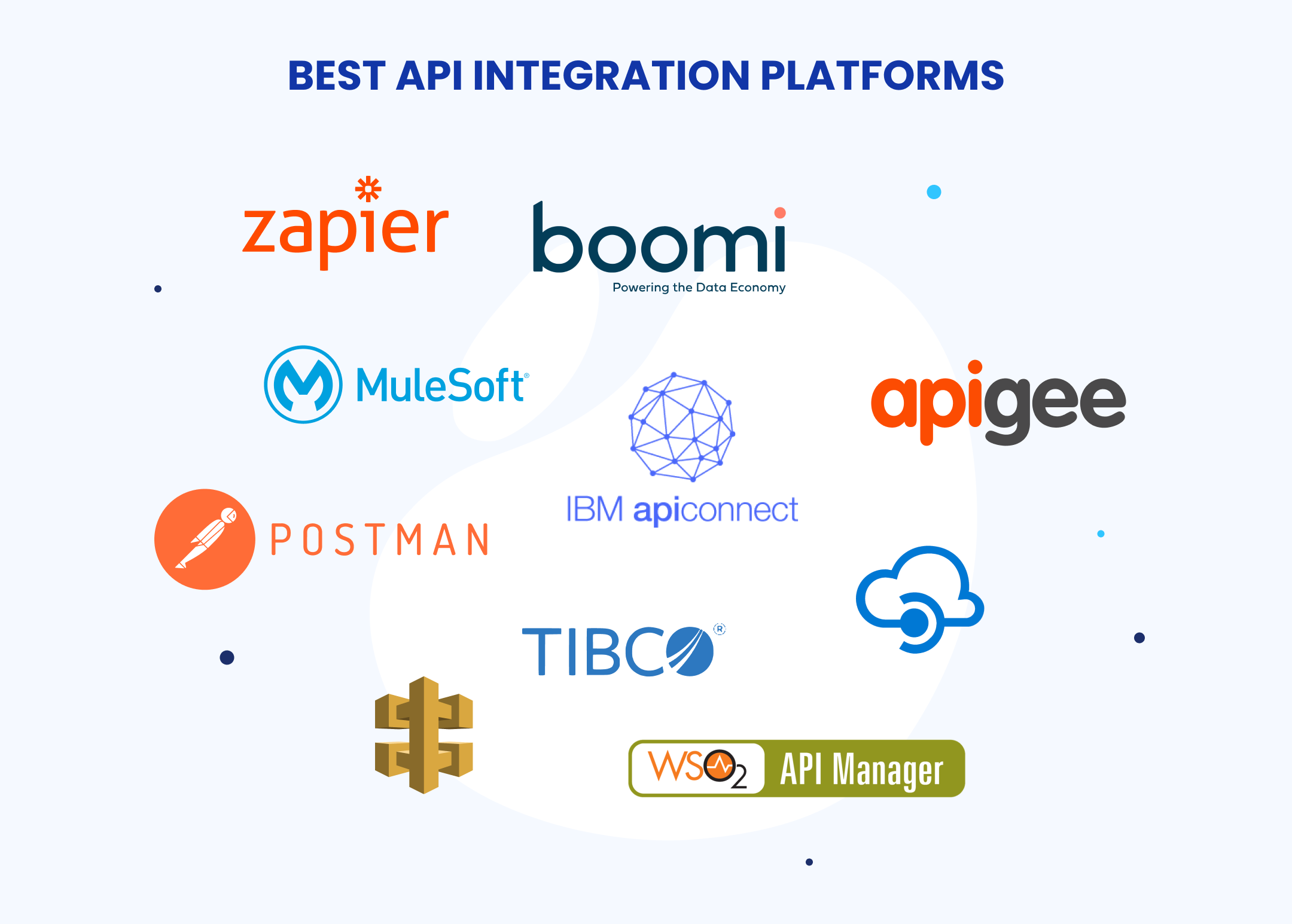
Conclusion
Choosing the right technologies is crucial for a project's success. In the fast-paced tech world, every minute matters, and leveraging low-code technologies wisely can speed up development, giving you an edge over similar products.
API integration is a staple in nearly every software development project. Opting for low-code API development is a smart way to save time and costs where reinventing the wheel isn't necessary.
Despite its perks, low-code API integration should be applied only when it doesn't sacrifice product quality and functionality.
If you're seeking effective ways to integrate APIs or enhance overall project development, don't hesitate to get in touch. Our experienced developers are ready to assist, ensuring a swift and efficient development process.
FAQ
Low-code integration platforms can help your large business save costs by significantly reducing development time and resources. Such platforms enable faster deployment and minimize the need for extensive coding expertise. Thus, they optimize operational efficiency and reduce overall project expenses.
Low-code platforms prioritize security by providing robust encryption, authentication mechanisms, and access controls. They comply with industry-specific regulations, making them a secure choice for handling sensitive business data.
Absolutely. Low-code platforms offer the flexibility and tools needed to integrate legacy systems with modern applications. They provide connectors and adapters to bridge the technology generation gap, ensuring seamless communication between older systems and newer solutions.






